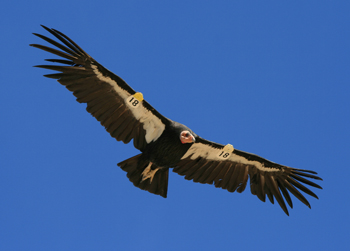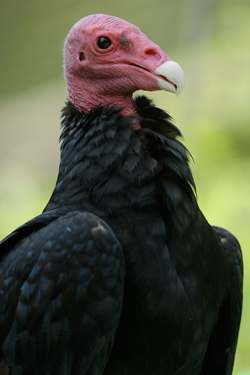This article may include affiliate links. If you click a link and make a purchase, Utah Outdoor Activities may receive a small commission at no extra cost to you. We only recommend products or services we personally use. FTC Affiliate Disclosure.
Though once on the brink of extinction, one of the world’s largest birds is slowly rebuilding its population in Utah. And the area in and around Zion National Park is playing a key role in the condor success story.

To see a condor in flight is stunning. With a wingspan of nearly 10 feet, they’re like small aircraft. They can reach speeds up to 50 miles per hour and travel hundreds of miles in a single day.
“The condors are spreading into southeastern Utah,” says Brian Higbee, a Utah resident who participates in condor conservation efforts. “Strictly scavengers, they feed in ranching areas and in the mountains where elk, deer, bighorns and moose live, and where ranchers take their herds for summer feed. These high mountains north of Zion have become their food buffet and ticket for survival.”
While the condors are expanding their territory, Zion National Park still serves as home base for many. The birds are present between April and November, but the best time to see them is usually during the summer months. A couple of the best places to observe these magnificent birds are Angels Landing and the Kolob Terrace Road. You can get more information about the condors in the park by clicking here. And if you’re going to be in the Grand Canyon, click here for information on the condors found in that region.

The recent success with the condor population is encouraging, but the situation is still precarious. The biggest threat to their survival is lead poisoning. Condors eat the carcasses of dead animals, domestic or wild, which sometimes contain lead fragments from ammunition used to dispatch the animals. Once ingested, the lead can be fatal. In fact, more than half of all condor diagnosed deaths are due to lead poisoning.
“The population is still precarious at about 400 birds in total,” says Higbee. “This lead is deadly to condors and even eagles. If this lead problem cannot be turned around, the future of the entire condor population is still in doubt.”
One positive force in the protection of condors is The Peregrine Fund. Based in Idaho, the organization is dedicated to the conservation of raptors worldwide.
In addition to producing condors for release and monitoring released individuals, The Peregrine Fund recently built Utah’s first condor capture and testing facility near Cedar City. Once a condor is captured, it is tested for lead poisoning. If it is found to have ingested lead, which is all too common, the experts from The Peregrine Fund will deliver lifesaving treatment that can extract the lead and save the bird through a process called chelation, the same as is used for humans with high lead.
The State of Utah partnered with The Peregrine Fund to develop voluntary programs to encourage hunters to use non-lead bullets or simply remove lead-tainted remains from the field. There have been free-ammo offers for big-game hunters and drawings for prizes provided by The Peregrine Fund, like rifles and ATVs for those who contribute to getting the lead out.

“It’s a pleasure to work with hunters to preserve yet another species, adding to our heritage of conservation,” says Chris Parish, The Peregrine Fund’s Condor Project Director and a hunter himself. “The future of conservation lies in our hands, and this is something every hunter can do to participate.”
These efforts are definitely worthwhile and they’re making a powerful impact. The fact that Utah adventurers can see North America’s largest land bird in the wild is a special honor.
“I personally have stood on the edge of the canyon and witnessed over a dozen of these rare birds flying directly in front of me, catching thermals and soaring many thousands of feet above the already 8,000 feet elevation,” says Higbee. “It’s the chance of a lifetime.”
Related Links:
We hope you enjoyed this information. For more outdoor activities, please connect with us on YouTube, Facebook and Instagram. Help us keep this site up and running by visiting our online store which features outdoor themed gifts, decor and more. Thank you for visiting and for your ongoing support!